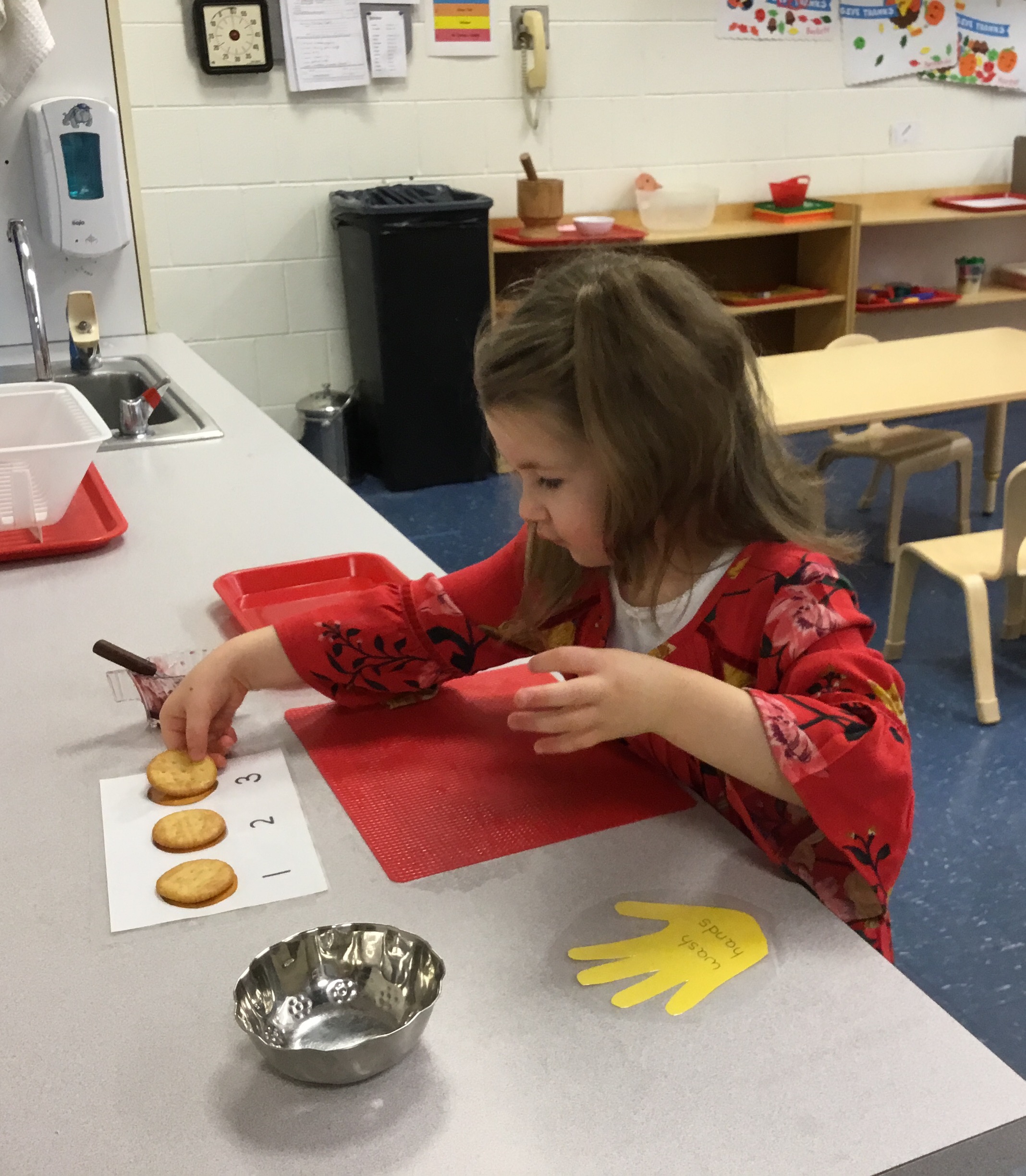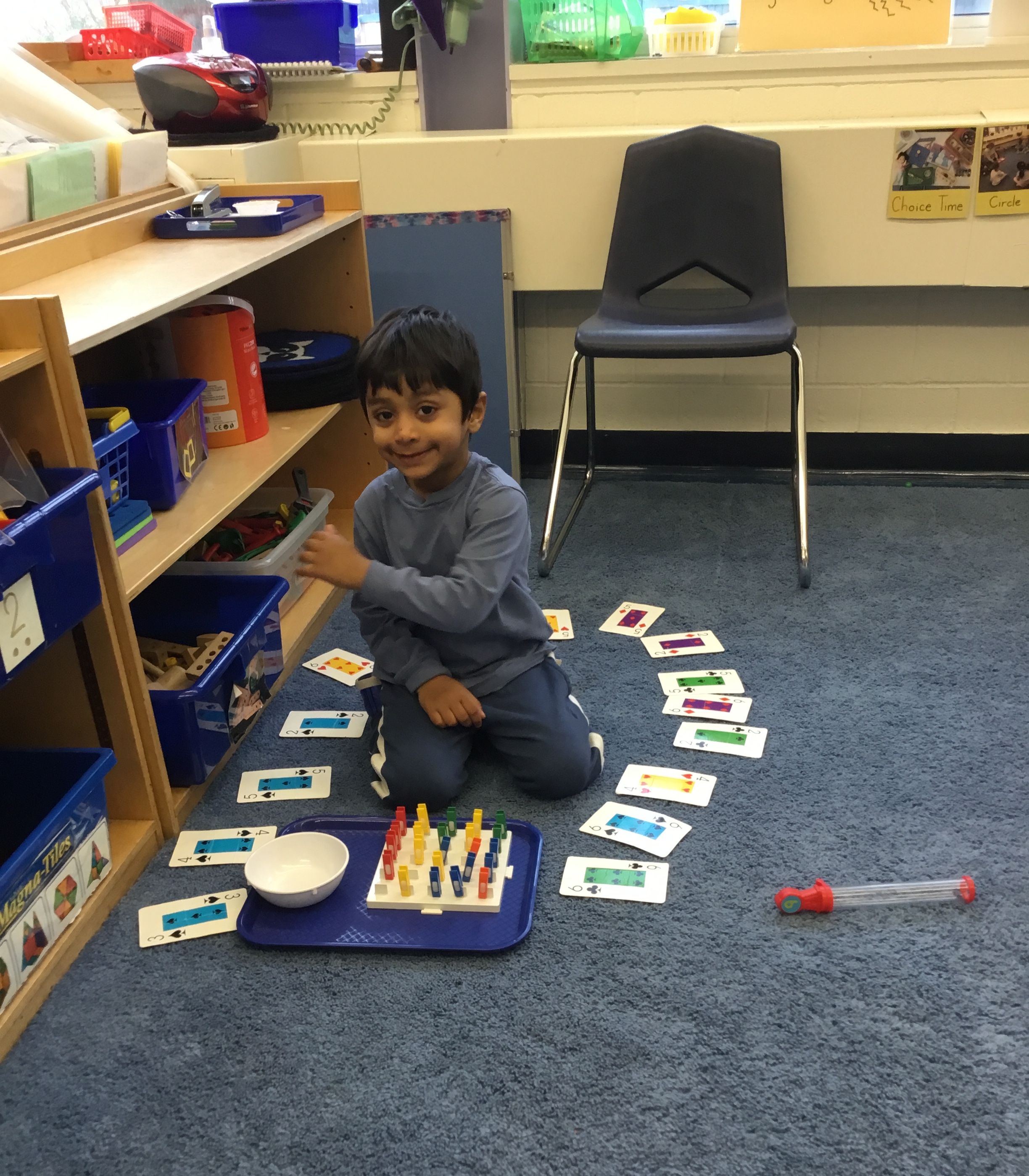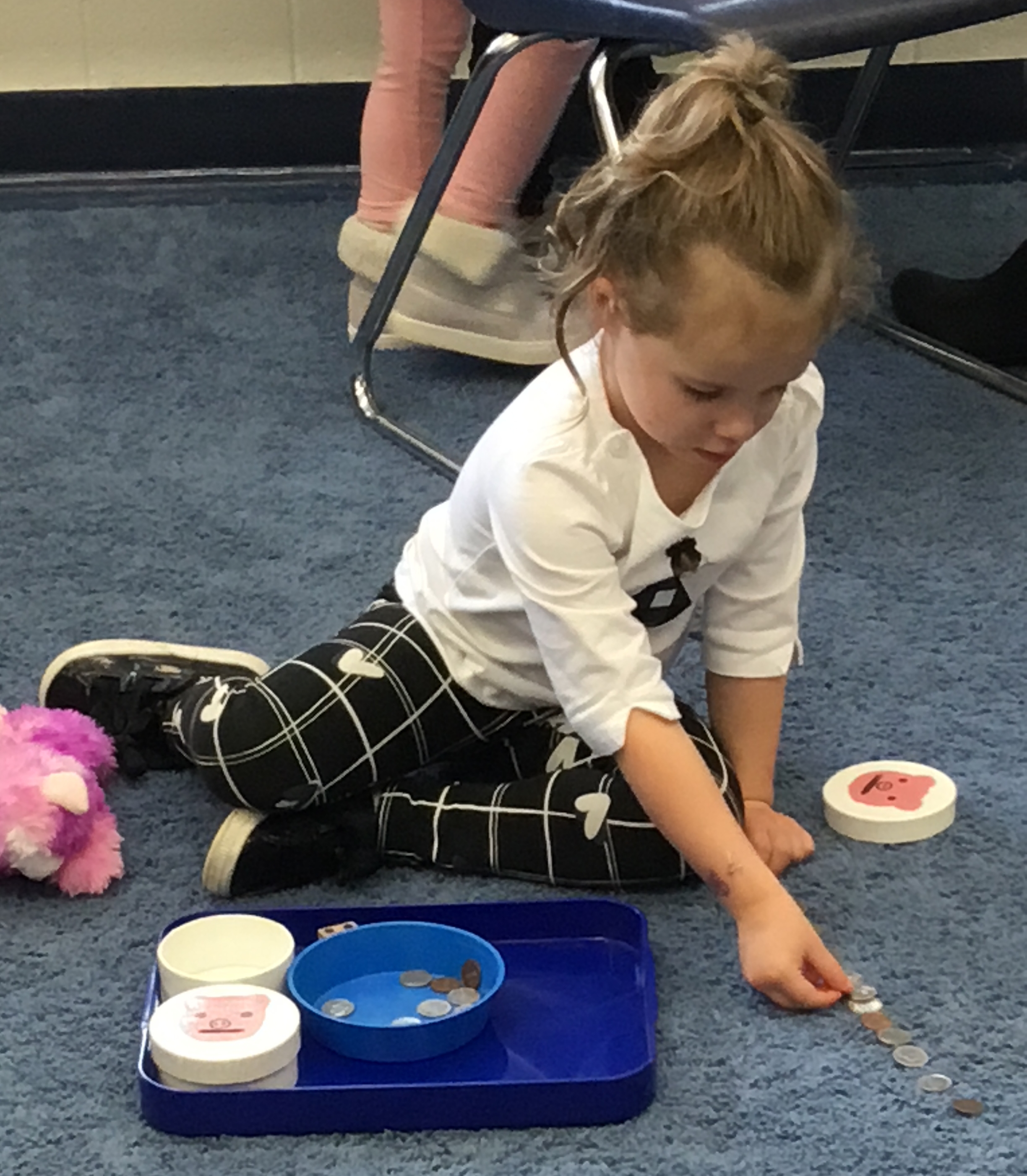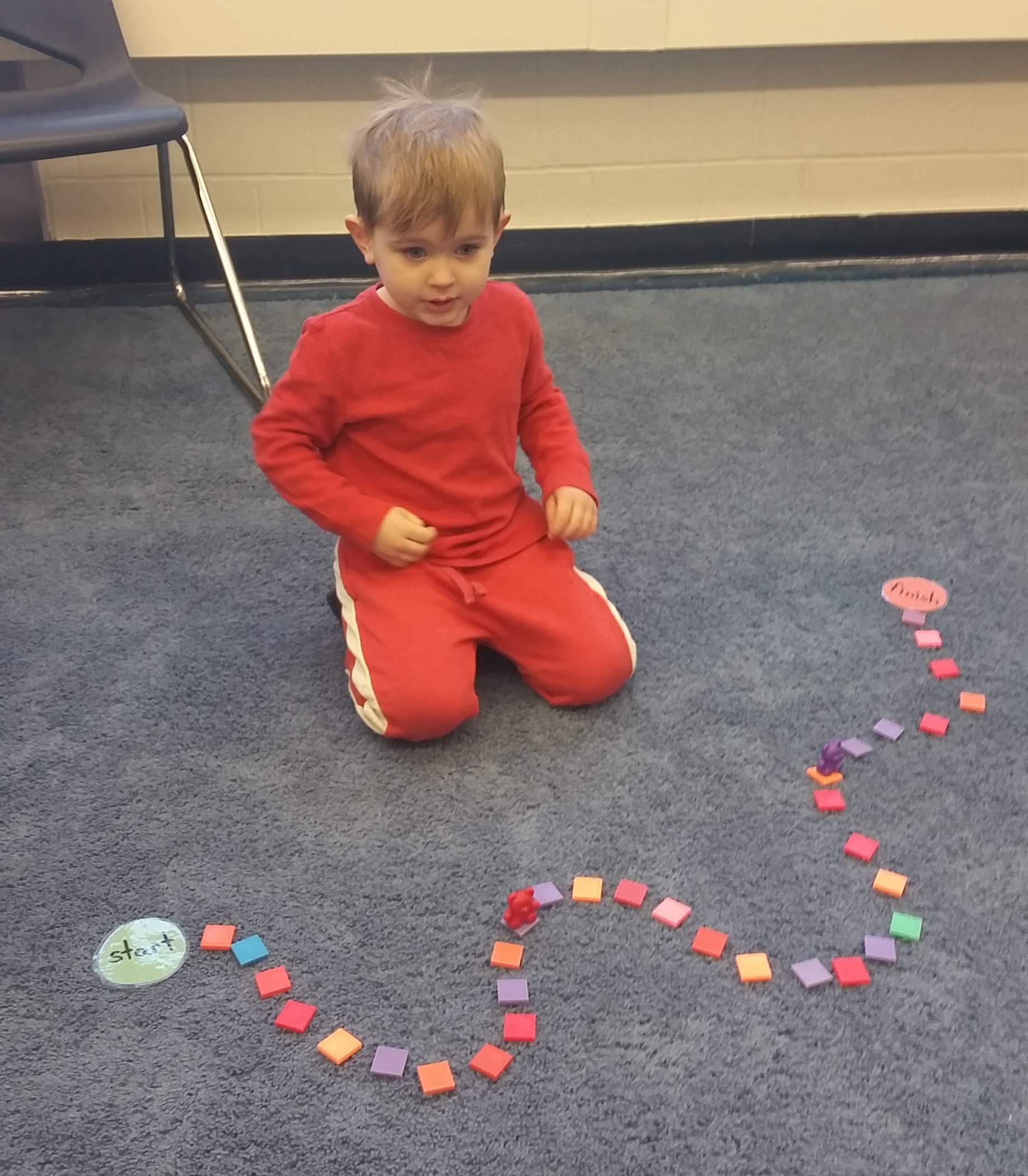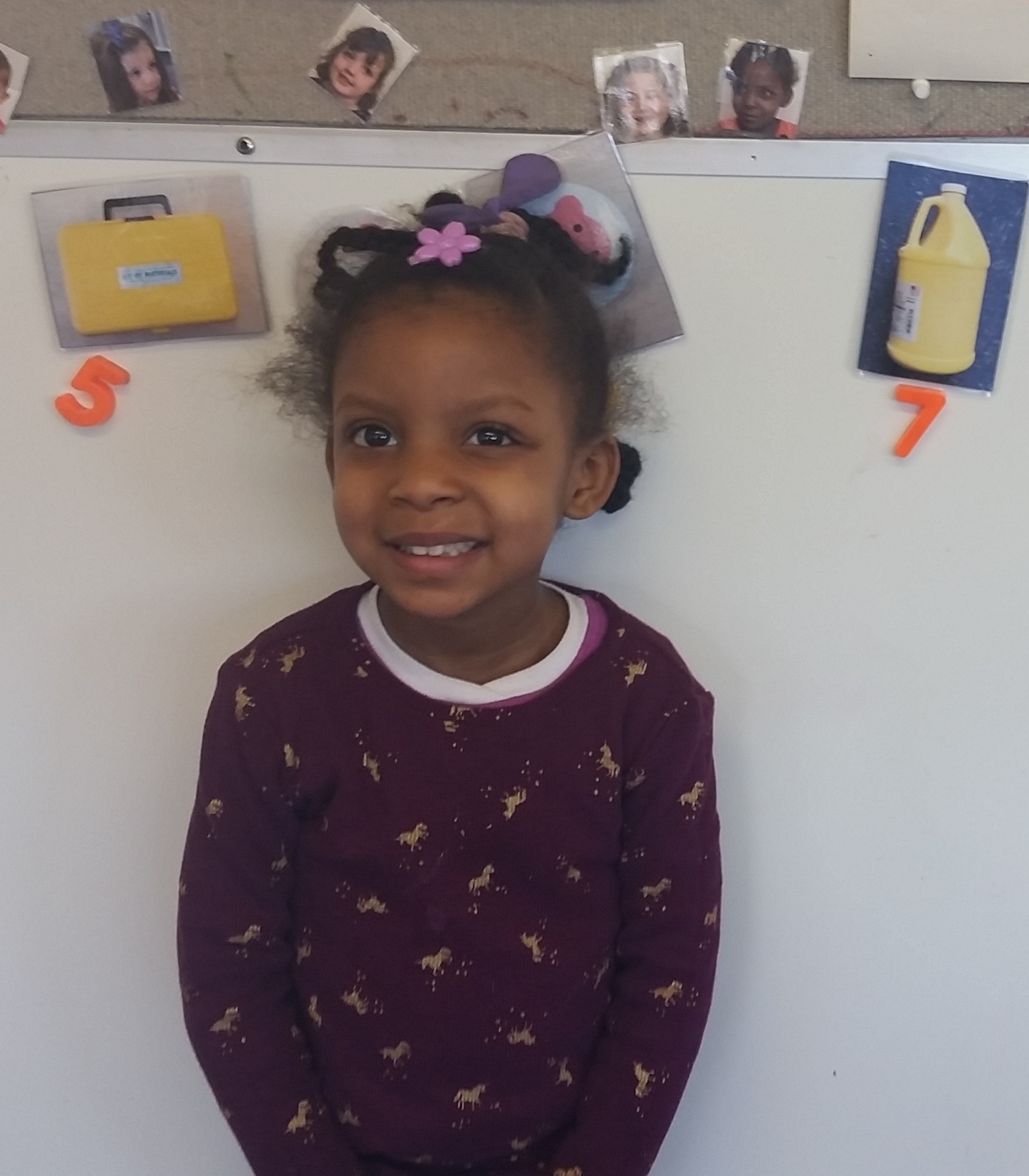Submitted by Marisa Teply
Children enter our Preschool-3 program with fanciful conceptions of what numbers are and mean. In our curriculum, numeration and ordinal counting occur naturally in our classroom routines and activities, in conjunction with grouping, classification and related math-training exercises. These activities serve as a basis for forming and guiding mathematical and other abstract faculties like extraction, recognition, appreciation and measurement of size, effect and importance of objects and factors.
Some classroom jobs that are assigned to the children on a rotating weekly basis specifically involve numeration and ordinal counting:
- In preparation for our classroom morning meetings, a child designated as “Number Helper” places magnetic numbers in the correct order under our class’s daily schedule cards.
- The children get exposure to ordinal counting every time they form a line to leave the classroom, and the “Number Helper” will sometimes give each child a number name.
- A “Snack Helper” has the job of counting place mats and the number of children in attendance. During snack, number grids are often passed out to each child, which they will use to carefully count out the small crackers served that day.
- In
the classroom there are math shelves filled with many math games and
activities. Preschool- 3 math games and activities begin with simple number
activities – counting to 5 and 10:
- There is the Piggy Bank game, for instance, which involves two partners who in turn roll a die and count the die-indicated number of coins into their piggy banks.
- There is the Flip-It game, which involves turning over a playing card and clamping that card’s number of clothes pins to a playing board.
- Twisty Road involves small tiles, a die and two teddy bear counters. Partners create a road with the tiles on the rug. Then each child in turn will roll the die and move her bear over that number of tiles until one player reaches the finish line.
- The Detective Game involves choosing an item from a pile of picture cards and with a pointer counting how many of that item there are in the classroom. The children enjoy hunting for and discovering how many chairs, clocks, tables, garbage pails and so forth exist in their learning environment.
- Many counting games require partners. While we don’t stress the concept of winners and losers, we like to emphasize the concepts of “more,” “less,” and “same as” when laying out and counting quantities at the finish of a game.
- Cooking activities, as well, employ numeration: Small signs and/or simple cook book pages clearly define the number of items needed to prepare an appetizer step by step in ordinal sequence.
Our Preschool-3 children enjoy being able to carefully and accurately count and compare quantities while playing together. They begin to recognize numbers in everything they do.

